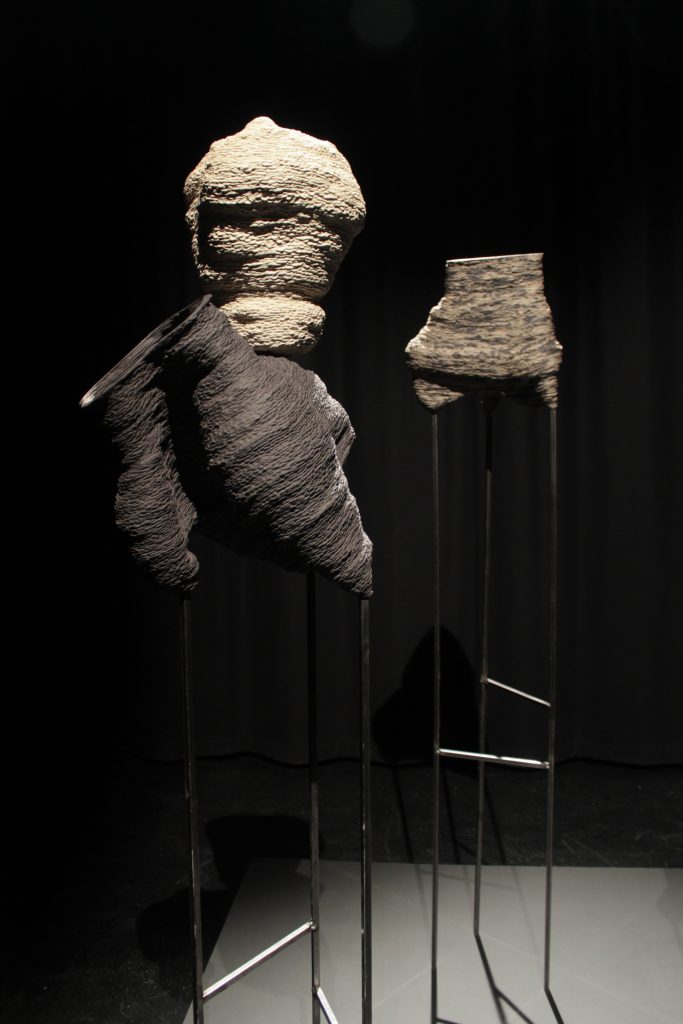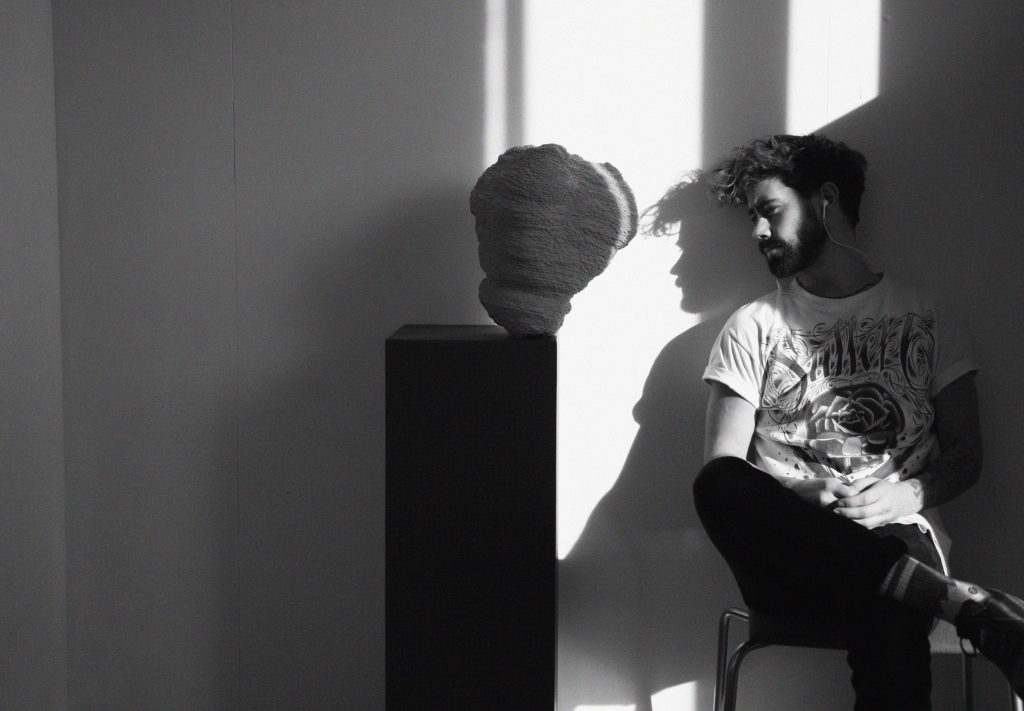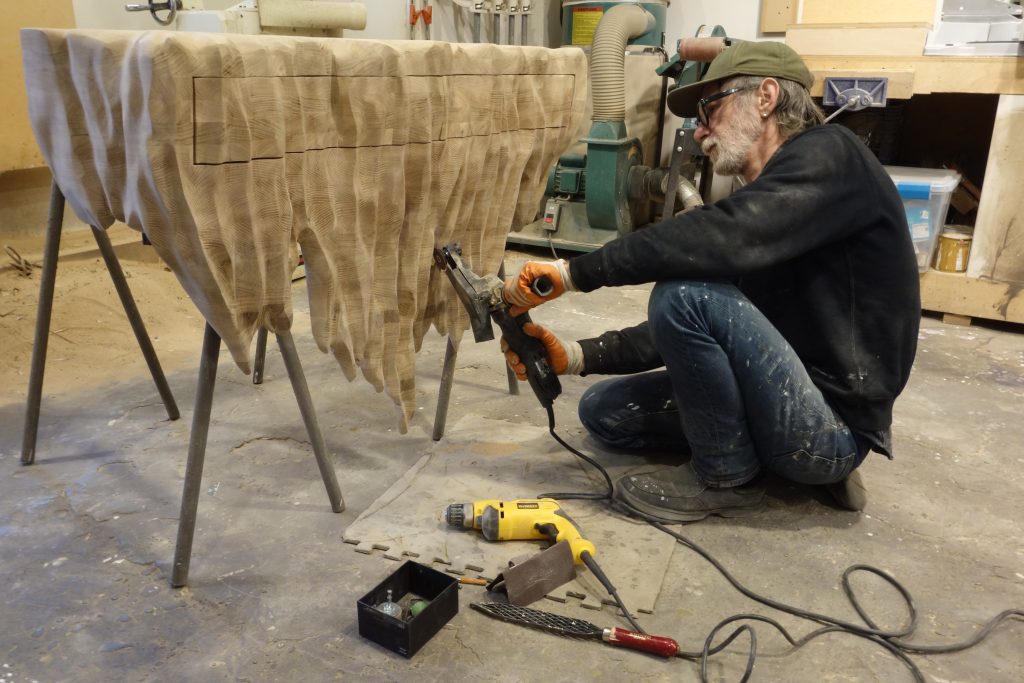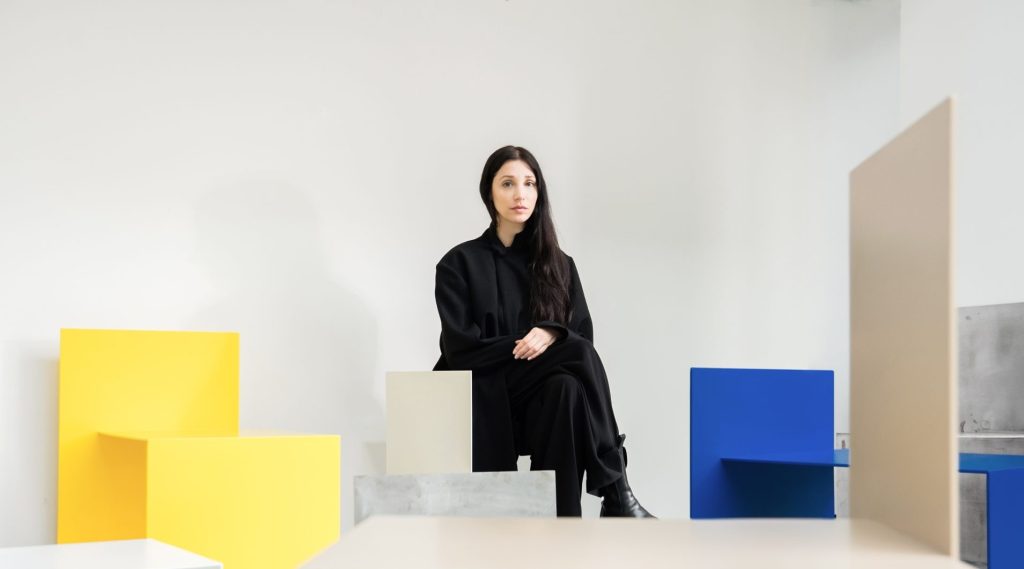Eyvind Solli Andreassen at Crossovers: Balancing on the Edge of Craft and Art
“I feel that we are all always slightly out of balance whether it be physical or mental and I transfer bits of this from myself into every object I produce”
All images courtesy of the artist.
View Eyvind Solli’s works “Hjørne”, “Untitled” and “Rythm of the Night”, in the Norwegian Collection at Crossovers
Where do we draw the line between makers and creators, after all, isn’t creativity simply defined as the act of creating? If this is so then why may we more commonly attribute high degrees of creativity to painters or sculptors than to construction workers and manufacturers? This idea of a hierarchy between manmade creations and the amount of creativity that is necessary to bring yet another object into this world is somewhat of a grey area. Even within realms of the arts which may be overwhelmingly agreed as a “creative” these grey areas still exist. Ceramics, the millennia-old tradition and perhaps man’s first expression of manifesting our interior world into the outside world, is often caught up in this classification limbo. A more strict tradition and functional beginnings have until recently classified this artform in the realm of craft up until the late ’70s and the introduction of abstraction into this material language.
If we are looking for some insight into these seemingly unanswerable questions or navigating this balancing act of classification then the perfect case study for this may be Norwegian creator-maker, artist-designer Eyvind Solli Andreassen. From his beginnings as a sheet metal worker and shifting into the school of fine arts in Olso, Solli has experienced first hand crossing this imaginary line between making and creating. Through ceramic works, wood and metal sculptures and complex large scale installations, Solli applies his past crafts knowledge in a realm of art that exists in its own mid-way between fine art and craft. Solli’s experiences shine through in a series of works that inhabit a world all their own and show the benefits of breaking from the cycle of type classification.
Solli’s objects may seem surreal when first encountered and to say that they defy gravity would be a clichéd understatement. Creating vessels with a series of limitations, for example a 10 kg limit of clay or no glazing, he pushes his material and his art form to its outer most limits. These ceramic vessels exist in a state of constant struggle and turmoil, or so it may seem. His works balance on the edge of podiums, stand high off the ground on self welded stilts or stacked on top of each other, resulting in the feeling that just the slightest wrong breath may cause every one of the fragile works to fall shattering to the ground. The works of art can be appreciated for their beauty in terms of form and texture or their power to command such strong energy in a space and within viewers, either way, their presence speaks for itself. These objects don’t know that at any moment they could fall to their demise, the objects aren’t aware of their classification of art or craft, they exist nonetheless, and in reality, Solli’s works may instead speak more as a reflection and manifestation of our own inner turmoil, and unbalance.


How did this fascination with having your works precariously balancing and seemingly defying gravity start?
When the object is observed, the balance between the strong connotations of the object itself is mediated while expressing a narrative that radiates anxiety from the physical location. This juxtaposition of connotations is grounded in order to engage with the object, both visually and emotionally. How are the objects placed in relation to the room and how can the viewer relate to them? I want the audience to be aware of how they move through the space and the objects that surround them. Are the objects secured or can they fall at any time? How do you navigate around the room and will you move differently if you know that none of the objects are secured from falling?
In the mounting process, the objects are placed in a “nervous” balance point, this balance point focuses not just on the physical tilt point itself, but also refers to and emphasizes the fragility and strength of the ceramic material. Through the tilting point, a tension and turmoil manifests within the observer, the balance point challenges gravity and activates the space between the object and the observer in a way that on might think that the object can fall at any given time.
What types of reactions do you want to see in viewers or have you noticed when audiences encounter this precarious balancing act?
By utilizing the tipping point, I wish to create a tension and turmoil within the audience. The balance point challenges gravity and activates the space between the object and the viewer with the impression that the object can fall over at any time. This induces a more controlled movement and navigation through the room and you become more aware of not just the objects, but also the actual placement of the objects.
I feel that we are all always slightly out of balance whether it be physical or mental and I transfer bits of this from myself into every object I produce. There is nervousness and tension, uncertainty and strength, there is a desire to develop. This is conveyed and transmitted further into an exhibition context and out to the public. The objects ask themselves the same question that I also think many people including myself ask. Will someone be there if I fall or will someone be the very reason why I actually fall. The objects respond and interact with everyone who moves in the room, seemingly straight-backed and unafraid, but still with a core of humility and unease that can be both seen and felt throughout the room.
Before studying at National Academy of Arts in Oslo, you trained as a sheet metal worker and a welder, why did you make this switch?
Working at the docks as a sheet metal worker and a welder mainly consisted of constructing and building pre-designed steel modules by engineers. I would say that this is where my interest in form and building was started. Eventually, the desire to explore and develop my own forms and constructions beyond what was given me in a technical drawing came to life. The thought of using other materials, what they could do and make things for completely different purpose.
After working with such hard and difficult malleable material such as construction steel within a workplace with strictly regulated tolerances, my encounter with clay felt like a relief. To be able to manipulate a material only by using my own hands opened up an entire new world for me. I got a sense of closeness and relationship to the material that I have never felt before. Clay, although it sometimes seems to have a mind of its own, is very malleable. It responds and reacts to any external, physical force that interacts with it. It is easily influenced and does not necessarily require any tools other than one’s own body which gave me the freedom to explore in countless ways.


How do you think this affected your way of thinking as an artist, did it bring you any unexpected advantages?
In the beginning, I feel like it brought me more disadvantages than benefits, given that I had difficulty relinquishing control and moving into unknown territories that I do not know. I felt very much intimidated by going into something I didn’t quite know what was, but eventually, I began to understand that I could let the clay move freely and still keep the control by not only working with the clay as a material but actually working together with it. Where the clay became too heavy for its own weight and was about to collapse, I could intervene an give it a helping hand and prevent collapse by helping it move in a different direction where the object could continue and evolve. Clay is a tactile and hands-on material the same way metal is, but where I think it differs is something that the artist Tony Cragg once said: “When I move, the clay moves». Every single movement I make marks the clay body one way or the other and is revealed openly. This makes clay, even more than metal an outstanding story teller and the result is the object being able to act like an open book that does not hide any of the processes.


Why do you impose such strict and meticulous limitations on your work process for example the 10 kg of clay weight limit?
The limitations imposed on my process are many and can vary from the 10 kg clay limit to flipping the object multiple times throughout the build, to making an object that has to be a bale to balance on top of another object. After working with the same technique (coiling) for a while I started to notice that I had begun to predict the outcome of the object, I felt I had to much control. Each object started to look alike and some of the excitement of what the next object would look like started to fade. I had to do something that would change the way I thought about the finished object, I had figure out a way to distract my self from the end and focus more on what was in front of me on the table.
With an unlimited amount of clay I could always add more to tweak the object into what I hade pictured in my head, but by adding these restrictions to my process made it more difficult for me to decide what it would turn out to be. It was a way for me to challenge myself and my work by preventing myself from ending up in the same track over and over.
It created a varied system and at the same time a sort of a distance from the form I hade in mind. It contributed ti give myself a different view on what I was dealing with and at the same time added an element of surprise in the finished product.




Crossovers by Adorno will present a range of collections of dynamic works by independent designers from a selection of local scenes. The exhibition celebrates the designers and communities playing a central role in maintaining and renewing today’s local design and crafts cultures. Eyvind Solli’s work and the works presented in the Norwegian Collection by Kråkvik & D’Orazio showcase designers creating a new domestic language of form and functionality in a wide range of materials. Presenting these works together with works from 10 other top design scenes from around the world creates a cross-cultural dialogue to examine the current state and future of contemporary design.
To preview the Norwegian collection and stay up to date on the release of further news & previews sign up to our newsletter below.


Bio
Eyvind Solli Andreassen is previously trained as a sheet metal worker and welder, after 4 years working at a shipyard, he moved from Porsgrunn to Oslo and enrolled at the Oslo National Academy of the Arts where he received an MFA in Medium and Material based art, A varied academic and vocational background is reflected in a similarly varied use of materials and media, with a focus on bigger installations in wood and sculptures and objects in metal and ceramics. I want to explore shape, volume and size and are searching for how much I have to manipulate clay to change the visual perception of the object – from one form to another. The main thought and desire around my current work is made to be perceived as a play with gravity, the objects are created and placed in a nervous balance point that gives the impression that the objects are about to collapse or fall to the ground at any moment. Both the broken remains of an objected that’s been shattered from falling from a balancing point and the objects that are proudly tiptoeing on the edge of a metal rod or pedestal edge are a constant reminder of this. The objects are completely free of glaze and are instead made of different types of clay, with a desire to use the natural colors and different characteristics of the clay itself, highlighting the texture and the surface on the inside and outside where smooth meets the coarse.





